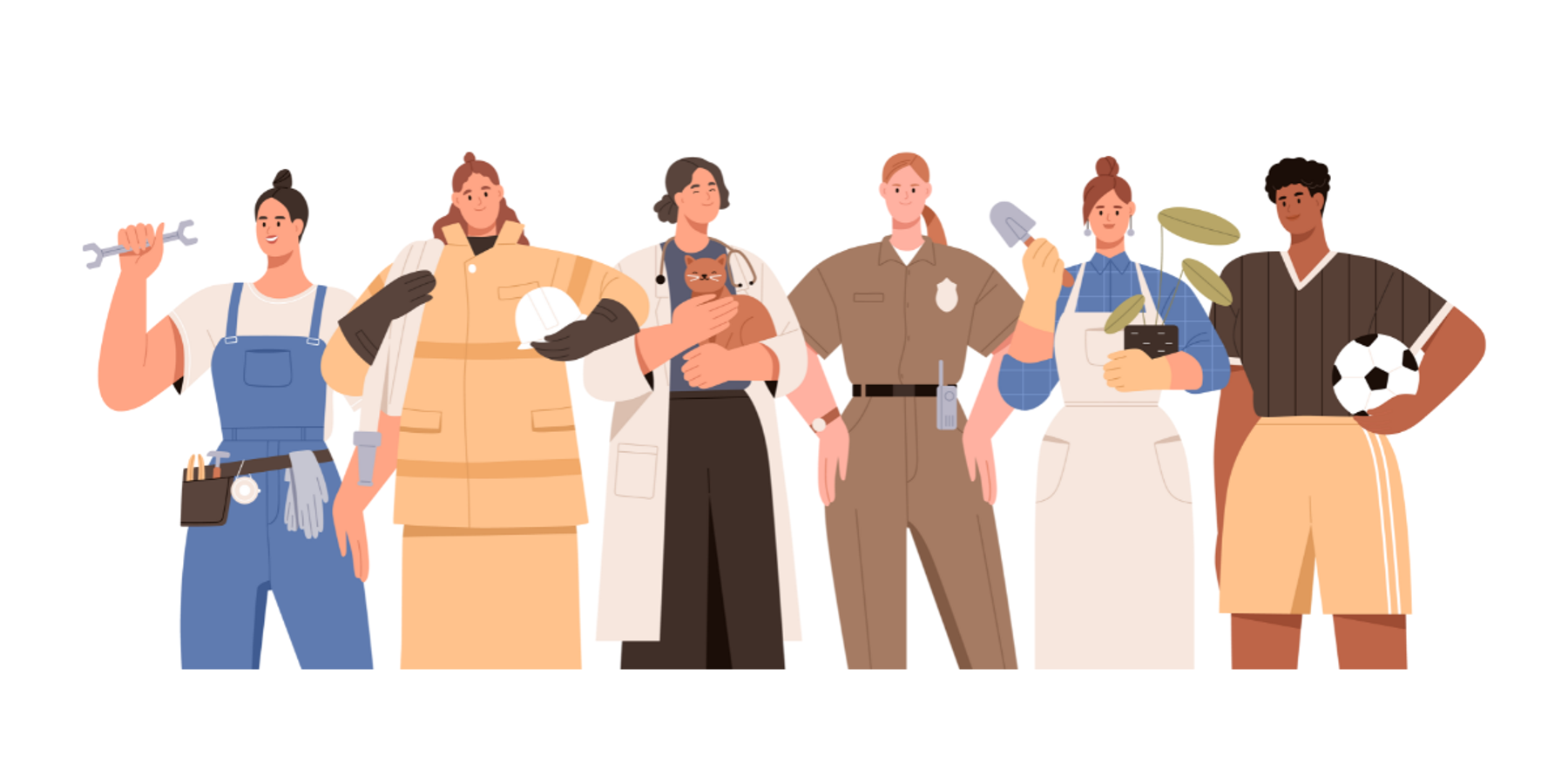We’re all seeing the way artificial intelligence (AI) is revolutionizing every industry, from manufacturing to entertainment. AI is disrupting traditionally human-centric processes like talent management, and Forbes magazine confirms that “AI is reshaping the recruitment landscape.” In a people-centered line of work, we are now able to implement AI at nearly every touch-point of the employee lifecycle, and it’s really catching on.
Talent management is, simply put, how the world hires and engages with employees. Nearly all (99%) of Fortune 500 companies are already using AI in recruitment, and investment for AI talent management is only expected to increase. With AI talent management tools promising to streamline work and make human lives easier, the industry still risks losing the ‘human’ in ‘human resources’. One study shows that 71% of Americans think that AI shouldn’t be used in final hiring decisions.
So in a world where AI is everywhere and can provide genuine time-saving tactics, what can organizations do to balance AI talent management and keep that human touch?
How does AI impact talent management?
First, we need to understand where automation has already become the norm.
- Recruitment. Sifting through large amounts of data for analysis is, frankly, what AI does best. An applicant tracking system (ATS) can learn what a company's top, bottom, and middle candidates look like and pre-screen resumes to significantly reduce the workload for recruiters or HR staff. This technology can quickly screen thousands of resumes per position, saving time and reducing human error, ensuring that AI has a place in the future of recruiting.
- Assessment. AI-driven candidate assessments for screening are also becoming increasingly popular. These types of assessments evaluate things like skills, knowledge, problem-solving capability, and personality.
- Communications. ATS and recruitment systems also automate communications and follow-up. Stock rejection emails can be blasted out to candidates en masse. Interviews can be scheduled by the system between candidates and managers. AI-powered chatbots are becoming the norm to field general inquiries, help start applications, and more.
- Learning and development. Predictive analytics can help an organization determine what their development needs are. AI software is able to analyze data to solve a range of HR challenges, from hiring to succession planning.
- Big data. HR leaders can use the output from AI learning to make data-driven decisions about recruitment, training, DEIB, and ideal staffing levels. There are also a number of AI-driven performance appraisal platforms that are able to identify and/or develop top performers.
Of course, there can be some not-so-insignificant downsides in handing over human processes purely to technology. On one hand, AI has the potential to reduce bias, however AI has also been found to learn and duplicate human bias in some cases.
Why do we need the human touch?
To mitigate some of these challenges, AI talent management jobs require the human staffer to focus on what candidates and employees actually want for their human teams.
In 2024, PowerToFly research found that 69% of diverse talent felt disconnected from their colleagues. We know that when employee experience is poor at a company, absenteeism, quiet quitting, and disengagement can affect the entire company and its productivity. When the candidate experience is poor, it can have lasting consequences for the company reputation, culture, and brand.
We also know that 66% of people would not apply to a job that uses AI in hiring decisions. When it comes to determining candidate fit with company culture, interviews, and final decisions, humans still have to be present. Providing a personalized experience with human empathy is critical to the candidate pipeline and builds the company’s reputation for the future.
How to balance AI and human interaction
Right now, there are no AI talent management certifications, so HR professionals need to stay up-to-date on how AI is affecting their industry on their own. Here are six tips for maintaining that essential human touch.
Personalize Communication
1. Give clear and personalized feedback. It feels horrible to receive bland, impersonal communications during an active job search (or worse yet, be ignored altogether). 59% of people PowerToFly surveyed reported being ghosted at some point during a job hunt. Let candidates know as soon as possible if they are no longer being considered and tell them specifically why. Avoid stock responses like “there are other candidates which are a better fit.” 59% of candidates that receive actual feedback will continue a relationship with the company.
2. Communication goes two-ways. You can, and should, ask for feedback as well! Implement a quick candidate survey to help you improve your communication processes. Bonus, this can help you tighten up your AI learning.
Employee Engagement
Talent management doesn’t stop after a candidate has been hired. Knowing how your employees are feeling and ensuring that they have opportunities to engage with each other is a critical part of the process.
3. Use regular employee engagement surveys to gather feedback. You need to know as soon as stress levels are going up, or when employees are shutting down. Give employees the opportunity to communicate about the workplace environment, and provide meaningful change based on feedback.
4. Provide opportunities during work hours for employees to engage with each other and their wider community. Happy hours, luncheons, and games at work can help your team connect. Employee volunteer opportunities are another great way for employees to connect with the community and be brand ambassadors at the same time.
AI + DEIB = oversight
A human-centric workplace celebrates all things DEIB, and we have to teach our AI tools how to celebrate it too.
5. Review all your talent management touch points through a DEIB lens. It’s time to move beyond just having more inclusive job descriptions. Screening processes, assessments, and promotions all need to be carried out in an inclusive way.
6. Know how AI works. AI is still fallible, and because it learns from humans, it can make some very human mistakes. Do you know how your AI talent management software actually works? Does your recruitment team know why certain candidates are coming up as the top and others are not? Answering these questions will eliminate bias and provide human oversight of AI.
AI talent management: efficient yet still human
AI talent management is here to stay. But, you can streamline time-consuming processes with AI and still maintain human connection. We know that candidates and employees will feel undervalued if they are handled by AI chatbots and dismissed through stock emails, which can have long-term consequences for your candidate pipeline and employer brand. Make sure interactions throughout the talent management processes should remain human-centric. Curious about how AI can help find you qualified candidates even easier? Check out how our Talent Matching works!
Chat with us to learn more about how you can leverage AI in talent management here.




